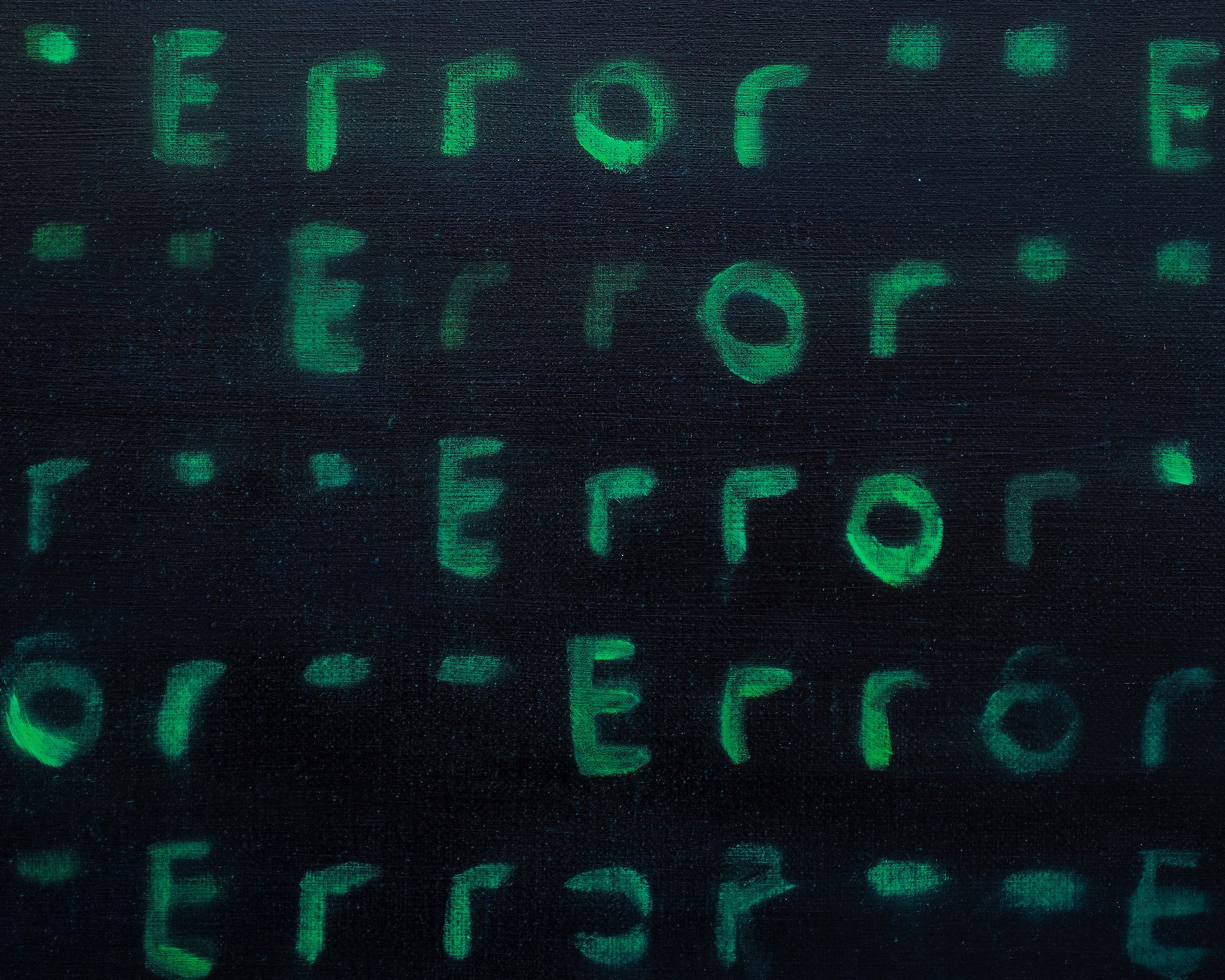Error, 2022
Error, 2022
Oil on linen
30 x 61 cm (12 x 24 in)
Error (2022) captures the fleeting light sensations of screen pixels, offering a macro perspective on the hidden instructions governing the web applications we use daily. Error messages appear when unexpected failures disrupt intended operations—brief yet significant signals of breakdown. As a computer’s way of communicating, these messages highlight the delicate interplay between usability, interactivity, and the evolving relationship between humans and machines. Through this painting, Tan Mu examines the unseen mechanisms that shape our digital experiences, revealing the fragility and complexity embedded within everyday technology.
Artissima, Installation View, November 4 – 6, 2022, OVAL Lingotto Fiere, Torino
Q: How did error messages become an inspiration for your work?
Tan Mu: The light sensitivity of screen pixels and error messages is one of the directions in my exploration of information systems. During my university studies in Expanded Media, I developed a deep interest in programming, coding, and technological development. This particular work draws inspiration from the error messages (Error) we frequently encounter in our daily digital interactions. These messages are often hidden within the applications and websites we use, only appearing when a system failure or signal disruption occurs. Error messages symbolize an interruption in information transmission—though they are merely a visible manifestation of the invisible codes running in the background, they have the power to disrupt many of our actions. At the same time, error messages serve as a mode of communication between humans and machines. While they are generated by complex algorithms and instructions, they present themselves in a language that humans can understand. By capturing these fleeting moments of interruption, I aim to explore the ways in which humans and machines communicate.
Q: In your paintings, the error characters emit a glowing green hue. How did you conceptualize this visual language?
Tan Mu: The green glow in my work is a tribute to early pixel-based screen displays. In early computing, monochrome green phosphor screens were widely used for displaying information, and I find this visual effect particularly fascinating. Although this work is an oil painting on canvas, I sought to recreate a luminous effect similar to that of lightboxes and digital screens through layered gradients and color transitions. This approach not only enhances the visual impact of the piece but also evokes associations with digital interfaces and screen-based experiences in the modern era.
Q: You mentioned that error messages symbolize an interruption in information transmission. Could you elaborate on this idea?
Tan Mu: Error messages signify the moment when an information pathway is disrupted. These interruptions not only affect the functionality of a system but also highlight the fragility of the digital age. Whether it’s a signal loss, a program crash, or a system failure, error messages serve as indicators of communication breakdowns in the transmission of data. This theme of disruption extends to my other works, such as NO CHANNEL, LOADING…, and NO SIGNAL, where I capture moments of interrupted transmissions in the digital era. Just like the error messages themselves, these visual cues are part of human-machine interaction, translating data failures into comprehensible text and imagery. They not only reflect the operational state of a system but also reveal how humans anticipate and respond to potential disruptions in technology.
Q: Error messages are an integral part of our digital visual culture. Do you think these symbols will continue to exist in the future?
Tan Mu: Error messages are products of our current technological phase. As technology advances, they may gradually disappear or be replaced by new forms of alerts. For example, in my work NO CHANNEL, I depict the classic TV signal interruption screen—a familiar sight from childhood. However, with increasingly stable and advanced broadcasting technology, these static-filled screens have largely been replaced by advertisements or seamless transitions, making them nearly obsolete. Through my work, I hope to document the existence of these error messages and preserve them as time stamps of past technological experiences. These prompts are not only representations of system failures but also historical markers of human-machine communication. By capturing these fleeting moments, I aim to provoke reflection on the evolution of technology and its impact on human experience.



